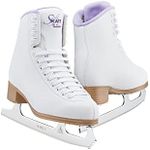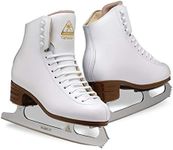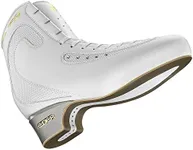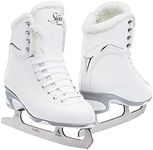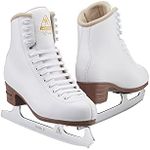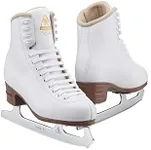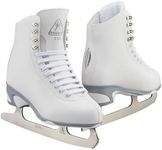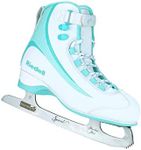Buying Guide for the Best Figure Skate For Women
Choosing the right figure skates is crucial for comfort, performance, and safety on the ice. Whether you're a beginner or an experienced skater, understanding the key specifications will help you make an informed decision. Here are the main factors to consider when selecting figure skates for women.Boot MaterialThe boot material of figure skates affects durability, support, and comfort. Common materials include leather, synthetic leather, and composite materials. Leather boots are durable and provide good support but may require a break-in period. Synthetic leather is lighter and often more affordable, but may not offer the same level of support. Composite materials can offer a balance of support and flexibility. Choose a material that matches your level of skating and comfort preference.
Boot StiffnessBoot stiffness refers to how rigid the boot is. Stiffer boots provide more support and are suitable for advanced skaters performing jumps and spins. Softer boots are more flexible and comfortable, making them ideal for beginners or recreational skaters. To determine the right stiffness, consider your skill level and the type of skating you plan to do. Beginners should opt for softer boots, while advanced skaters may need stiffer boots for better performance.
Blade TypeThe blade type is crucial for performance on the ice. Blades are typically made of stainless steel and come in different shapes and sizes. Beginners should look for blades with a flatter profile for stability, while advanced skaters may prefer blades with a more pronounced curve for better maneuverability. The length of the blade should match the size of the boot, and the toe pick should be appropriate for the skater's skill level. Choose a blade that complements your skating style and experience.
Fit and SizingProper fit and sizing are essential for comfort and performance. Figure skates should fit snugly without being too tight. It's important to measure your foot accurately and refer to the manufacturer's sizing chart. Consider the width of your foot as well, as some brands offer different width options. A well-fitted skate will provide better control and reduce the risk of blisters and injuries. Try on skates with the socks you plan to wear while skating to ensure the best fit.
Ankle SupportAnkle support is vital for stability and preventing injuries. Good ankle support helps maintain proper alignment and control on the ice. Look for skates with padded ankle areas and a secure lacing system. Beginners and intermediate skaters should prioritize strong ankle support to build confidence and improve technique. Advanced skaters may prefer a balance between support and flexibility to perform complex movements.
Lacing SystemThe lacing system affects how securely the skates fit. Traditional laces offer customizable tightness and are preferred by many skaters for their adjustability. Some modern skates feature quick-lace systems or Velcro straps for convenience. Choose a lacing system that provides a secure fit and is easy for you to use. Properly laced skates will enhance your performance and comfort on the ice.
